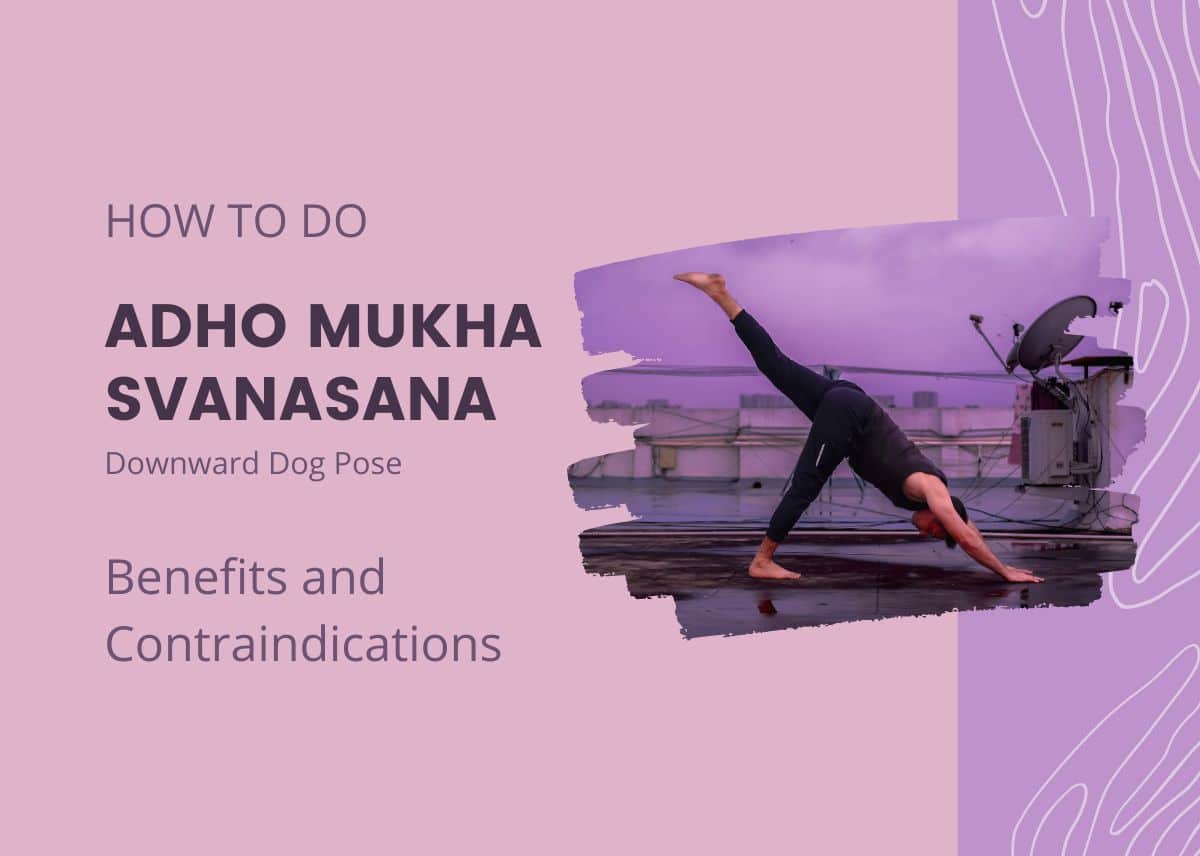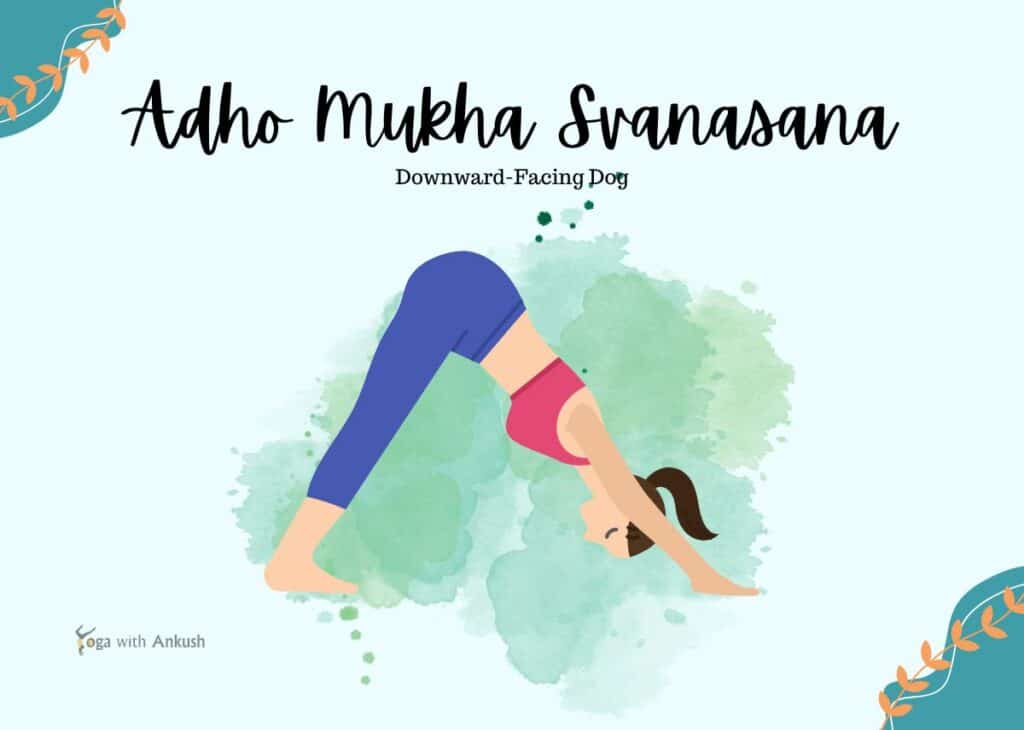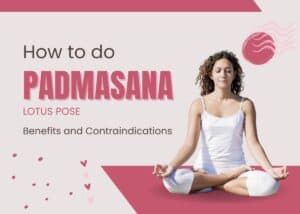![]()
How to do Adho Mukha Svanasana (Downward Dog Pose) – Adho Mukha Svanasana Benefits and Contraindications

How to do Adho Mukha Svanasana (Downward Dog Pose)?
Adho Mukha Svanasana, commonly known as the Downward Dog Pose, is a foundational yoga pose that offers numerous benefits for the mind and body. It is a pose that is frequently practiced in yoga classes and is suitable for practitioners of all levels. In this article, we will explore the steps to perform Adho Mukha Svanasana correctly, along with its benefits and contraindications.
Table of Contents
Introduction to Adho Mukha Svanasana
Adho Mukha Svanasana, derived from Sanskrit words “Adho” meaning downward, “Mukha” meaning face, and “Svanasana” meaning dog pose, resembles a dog stretching itself. It is a standing pose that engages multiple muscle groups and provides a gentle stretch to the entire body.
How to do Adho Mukha Svanasana (Downward Dog Pose)
Step-by-Step Guide to Performing Adho Mukha Svanasana
To perform Adho Mukha Svanasana, follow these steps:

Step 1: Starting Position
- Begin on your hands and knees, with your hands aligned with your shoulders and your knees aligned with your hips.
- Spread your fingers wide apart and press them firmly into the ground.
- Ensure that your wrists are under your shoulders and your knees are directly under your hips.
Step 2: Transition into Downward Dog Pose
- Exhale and lift your knees away from the floor, straightening your legs without locking the knees.
- Slowly lift your hips toward the ceiling while keeping your arms and legs straight.
- Press your heels down toward the floor, feeling a stretch in your calves and hamstrings.
- Gently engage your abdominal muscles to lengthen your spine.
Step 3: Alignment and Positioning
- Relax your head and neck, allowing them to hang freely between your upper arms.
- Keep your gaze directed towards your legs or navel to maintain a neutral neck position.
- Press your palms firmly into the ground, distributing the weight evenly between your hands and fingers.
- Ensure that your shoulders are relaxed and away from your ears.
Step 4: Holding the Pose
- Breathe deeply and hold the pose for 5-10 breaths, gradually increasing the duration as you become more comfortable.
- Focus on maintaining a steady and even breath throughout the pose.
- Feel the stretch along the back of your legs, spine, and shoulders.
Step 5: Releasing the Pose
- To release the pose, bend your knees and lower them back to the floor, returning to the starting position.
- Take a moment to rest in Child’s Pose or any other comfortable position before proceeding with your practice.
Benefits of Adho Mukha Svanasana
Adho Mukha Svanasana offers a wide range of benefits:
- Stretches and Strengthens Muscles: This pose stretches and strengthens the entire body, including the shoulders, arms, back, hamstrings, calves, and arches of the feet.
- Improves Posture: Regular practice of Adho Mukha Svanasana helps align the spine, improving posture and reducing back pain.
- Increases Flexibility: The pose increases the flexibility of the spine, shoulders, and hamstrings, enhancing overall mobility.
- Relieves Tension and Stress: Holding the pose helps release tension in the upper body and promotes relaxation, reducing stress and anxiety.
- Boosts Energy and Blood Circulation: The inverted position of the pose encourages blood flow to the brain, revitalizing the body and mind.
- Calms the Mind: Adho Mukha Svanasana helps calm the mind, improves focus, and promotes mental clarity.
Contraindications and Precautions
While Adho Mukha Svanasana is generally safe for most individuals, it may not be suitable for everyone. Here are some contraindications and precautions to consider:
- Pregnancy: Avoid practicing this pose during pregnancy, especially if you are in the second or third trimester.
- High Blood Pressure: Individuals with high blood pressure should approach this pose with caution. Avoid holding the pose for extended periods and seek guidance from a qualified yoga instructor.
- Wrist or Shoulder Injury: If you have an injury or pain in your wrists or shoulders, modify the pose or seek alternatives to avoid aggravating the condition.
- Carpal Tunnel Syndrome: If you have carpal tunnel syndrome, it’s advisable to practice this pose with caution or seek guidance from a healthcare professional or experienced yoga instructor.
Tips for a Successful Downward Dog Pose
Here are some tips to help you make the most out of your Adho Mukha Svanasana practice:
- Warm-up: Prioritize a gentle warm-up before attempting the pose to prepare your muscles and joints.
- Focus on Alignment: Pay attention to proper alignment, with your hands, feet, and hips in the correct position.
- Adjust the Pose: Modify the pose by bending your knees slightly or using props like blocks to support your hands if needed.
- Listen to Your Body: Respect your body’s limits and avoid pushing yourself into discomfort or pain. Gradually progress as your flexibility and strength improve.
- Breathe Mindfully: Maintain steady and relaxed breathing throughout the pose to enhance the overall experience.
Common Mistakes to Avoid
To optimize your practice, avoid the following common mistakes:
- Drooping Shoulders: Keep your shoulders away from your ears and actively engage your shoulder blades to maintain stability and prevent strain.
- Locking the Knees: Avoid hyperextending or locking your knees. Instead, maintain a gentle micro-bend to protect the joints.
- Rounding the Back: Aim to lengthen your spine and keep it in a neutral position, avoiding excessive rounding or overarching.
- Neglecting Proper Alignment: Pay attention to aligning your hands, feet, and hips correctly to maximize the benefits and prevent strain on specific areas.
- Holding Tension: Try to relax any unnecessary tension in your body, allowing for a more fluid and comfortable experience.
Modifications and Variations
Adho Mukha Svanasana can be modified or varied to suit individual needs and capabilities. Here are a few variations:
- Wall-Assisted Downward Dog: Practice the pose with your hands placed on a wall, allowing for additional support and stability.
- Downward Dog with Bent Knees: If you have tight hamstrings or lower back issues, slightly bend your knees to modify the pose.
- Three-Legged Downward Dog: Lift one leg off the ground, extending it upward while maintaining the pose with the other three limbs for an added challenge.
- Puppy Pose: Lower your forearms to the ground, keeping your hips aligned above your knees, to experience a gentle stretch while maintaining a similar shape to Downward Dog.
Incorporating Adho Mukha Svanasana into Your Yoga Practice
Adho Mukha Svanasana can be incorporated into your yoga practice in various ways:
- Warm-up: Use Downward Dog as a dynamic warm-up pose before other standing poses or asanas.
- Transition Pose: Use it as a transitional pose between different sequences or asanas to help reset and realign the body.
- Restorative Pose: Take breaks in Downward Dog during an intense practice to restore energy and allow the body to recover.
- Building Block: Use Adho Mukha Svanasana as a foundation for more advanced poses, such as inversions or arm balances.
Frequently Asked Questions (FAQs)
Can beginners practice Adho Mukha Svanasana?
Absolutely! Adho Mukha Svanasana is beginner-friendly and can be modified to suit different levels of flexibility and strength.
How long should I hold the pose?
Start with holding the pose for 5-10 breaths and gradually increase the duration as you become more comfortable. Listen to your body and adjust accordingly.
Can I practice Adho Mukha Svanasana if I have wrist pain?
If you have wrist pain, you can try using a yoga wedge or placing your hands on yoga blocks to alleviate the pressure on your wrists.
Is Downward Dog beneficial for runners?
Yes, Adho Mukha Svanasana can help stretch and strengthen the muscles used in running, improving flexibility and preventing injuries.
Can I practice Downward Dog during menstruation?
It is generally safe to practice Adho Mukha Svanasana during menstruation. However, listen to your body and modify or skip the pose if it feels uncomfortable.
Conclusion
Adho Mukha Svanasana, the Downward Dog Pose, is a versatile yoga posture with numerous benefits. By incorporating this pose into your regular yoga practice, you can improve strength, flexibility, posture, and overall well-being. Remember to practice with proper alignment, listen to your body, and enjoy the journey of exploring this foundational yoga pose.
Also Read:







